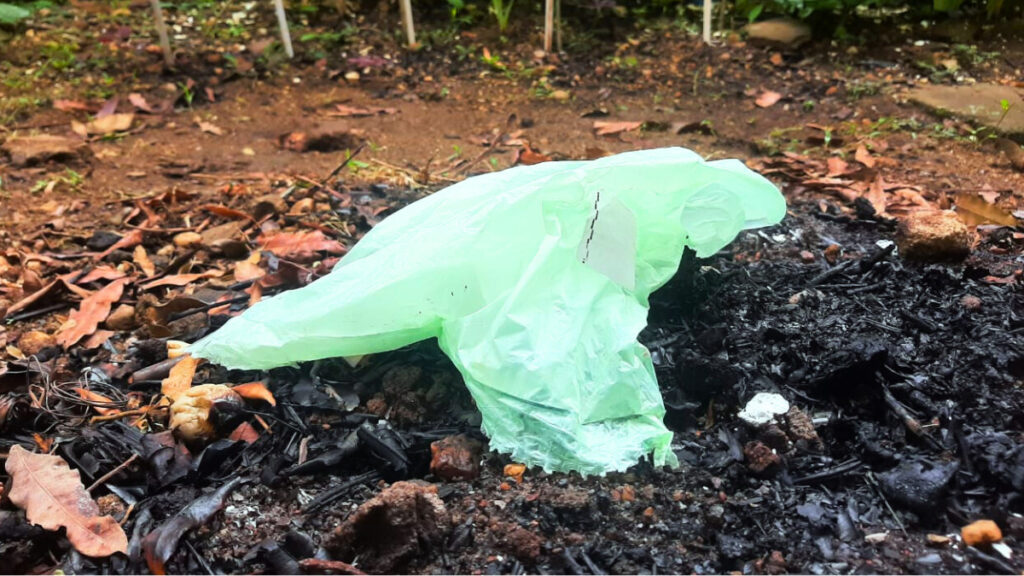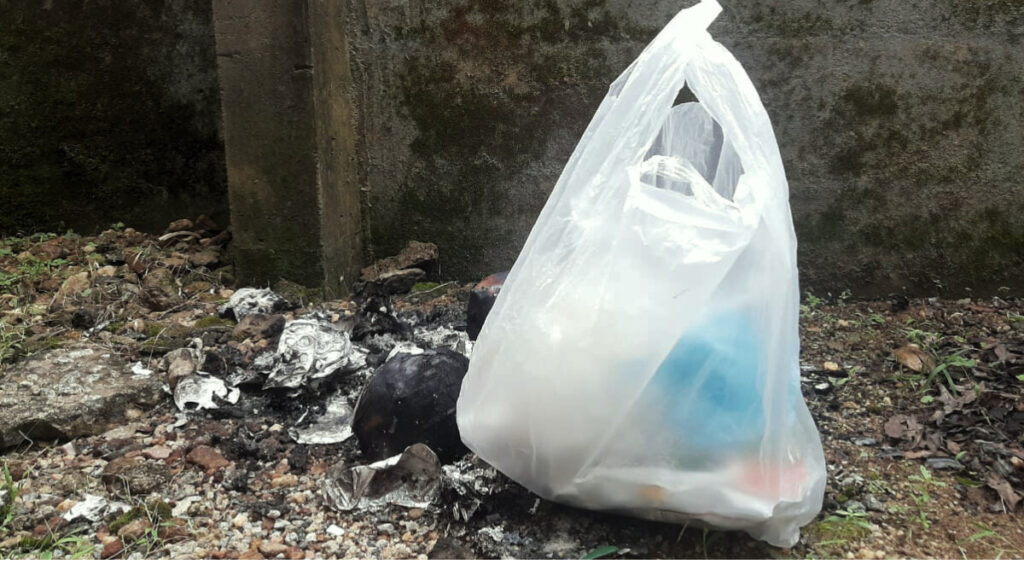We use compostable bags refusing plastic bags thinking we are living in ecofriendly lifestyle. Yes, these biodegradable bags came as a solution for plastic pollution. But what if these green solutions are more harmful to our environment?
We have to rethink this green habit again due to recent scientific discoveries about these growing compostable bags.
Professor Soledad Lorenzo from Universidad de A Coruña and her team recently compared biodegradable bags with conventional plastic bags and recycled plastic bags.
Let’s find out what happens to these bags when release to the environment.

What Are Compostable Bags Made Of?
Before the actual situation It is better to know about the composition of these compostable bags.
Most commercial compostable bags are built from a mix of bioplastics like PBAT (polybutylene-adipate-terephthalate), PLA (polylactic acid), starch, and sometimes PHA (polyhydroxyalkanoates).
These materials degrade faster than traditional plastic and release more chemical compound into the environment more quickly.
And these aren’t just harmless extras.
The studies found commercial compostable bags contained high levels of plasticizers. Which are used for increase the flexibility of the polymer.
As well as those polymers contain organophosphate flame retardants like Triphenyl phosphate and Tris(chloropropyl) phosphate. These chemicals are classified as endocrine disruptors or toxic to reproduction. Even pesticides like 2,6-DIPN.
Their ecotoxicological studies on marine environment shows higher short-term aquatic toxicity to marine invertebrates and This finding has also been confirmed by earlier studies. Let’s look at some toxicity studies in real environment with the breakdown of these bags.
Do them Actually Break Down?
Yes, but it depends on where they end up.
A study done by Centro de Investigación Mariña shows that in marine environments, compostable bags degrade significantly faster than conventional polyethylene bags. Some fall apart in just 28 to 120 days. Microbes do most of the work here, especially in dark, oxygen-poor conditions.
However, this breakdown doesn’t mean the environment is safe. As we earlier discussed, they release a range of bioactive chemical compounds, many of which can increase the toxicity of the materials over time.
The laboratory tests on marine invertebrates like sea urchin and mussel embryos leachates from compostable bags caused notable toxic effects, especially at early life stages when organisms are most vulnerable.
The toxicity often worsened as the material broke down, suggesting that the degradation process itself unleashes harmful substances into the environment.
And What About on Land?
In terrestrial composting systems like vermicomposting with earthworms, shows the harmful impacts on of terrestrial environment.
The ecotoxicologist Dr. Luís Mendes shows exposure of Earthworms to the leachate form biodegradable bags experienced reproductive effects, producing fewer cocoons and juveniles. In other words, the bags didn’t kill the worms, but they quietly interfered with their ability to reproduce.
He also shows that some compostable bags broke down reasonably well especially those made with starch. but others, particularly those containing PBAT blended with talc, showed almost no degradation even after 120 days.
A plastic that doesn’t degrade completely, and leaks chemicals into the soil? That’s not exactly the green solution we were promised.
Are Compostable Bags Safer Than Regular Plastic?

Not necessarily.
The research findings tell us how we blindly harm to our environment. While compostable bags do break down faster than polyethylene plastics bags and reduce visible pollution, they carry a heavier chemical burden. Comparatively, compostable bags contained more toxic additives, caused more ecotoxicological effects in marine life, and even disrupted earthworm reproduction on land.
The conventional plastic bags contribute visual pollutions as well as microplastic pollution with the long term breakdown. But they do not show immediate toxicity to the environment. However, some so-called biodegradable plastics may be engaging in greenwashing by causing acute ecotoxicity under the label of sustainability.
Time to re-consider on environmental policies that promote compostable bags.
The intention behind compostable plastics is good. But good intentions don’t always make good greener environment.
These findings remind us that biodegradability doesn’t equal safety. Always we stick into not in my backyard, and try to make the garbage disappear. But is not eco-conscious. we need to understand what it leaves behind.
Before you grab that next compostable bag, pause and think. What’s in it? Where will it go? And what could it do to the ecosystems we’re trying to protect?


